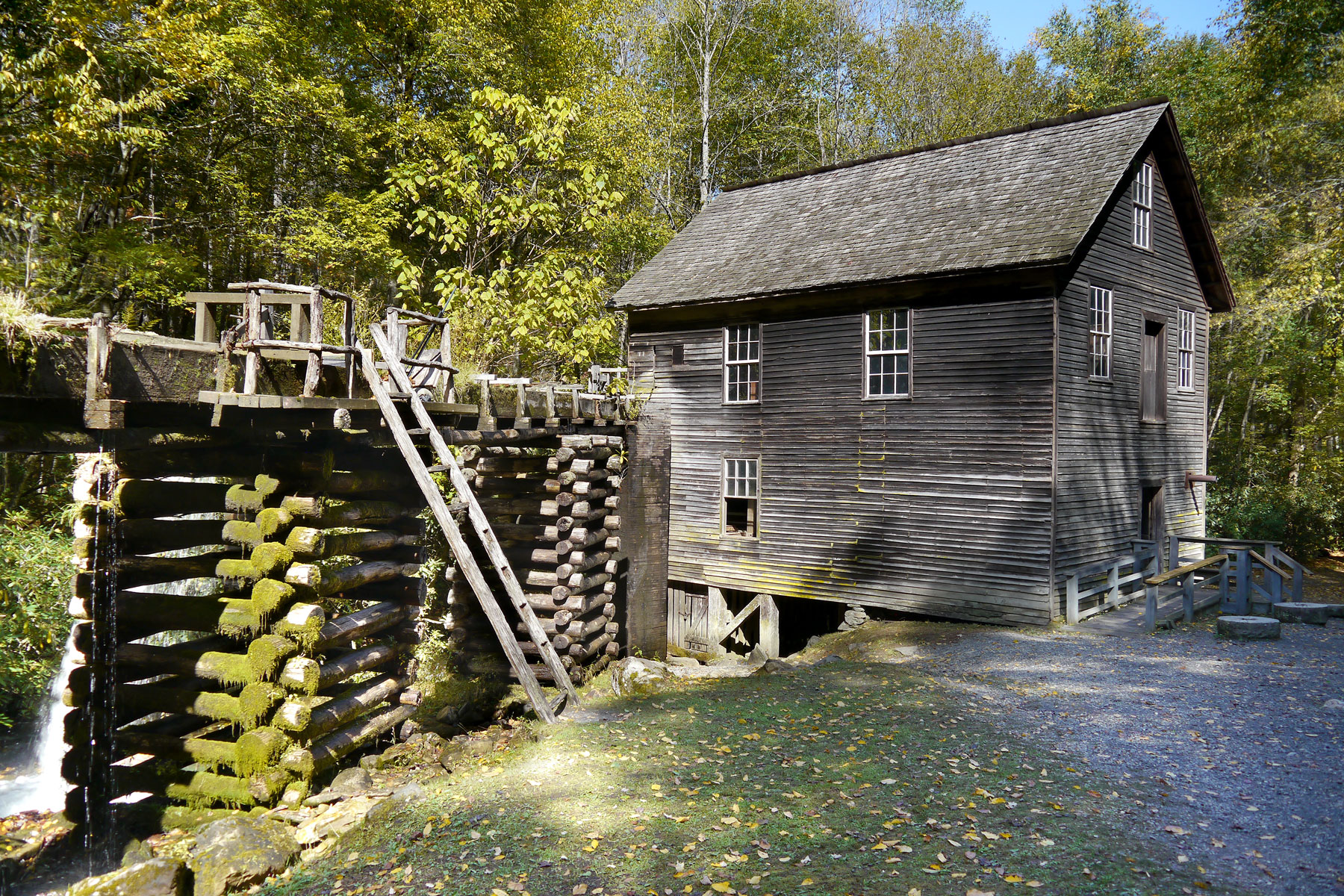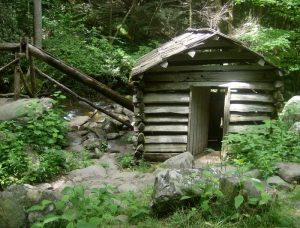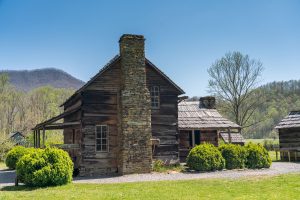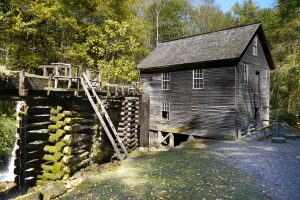
Great Smoky Mountains National Park offers more than a dozen family-friendly nature and historic walking trails. They’re perfect for a quick walk in the woods to see the park’s flora, fauna, and remnants of the past.
This is the third in a three-part series of blog posts describing these trails.
In my previous blogs, I covered several short nature trails in the national park that are great for easy family explorations. In addition to these nature trails, the park offers three historic walking trails that focus on a specific site. Below, I offer a description of each of them to help you plan your next adventure through time.

1. Noah “Bud” Ogle Place—Round trip: 0.75 miles
This historic nature walk (one of the best wildflower walks in the spring) gives you a glimpse into what life on a mountain farm was like before the park was created. The walk begins at the Ogle family cabin located on Cherokee Orchard Road, right before the start of the Roaring Fork Motor Nature Trail. Noah “Bud” Ogle belonged to one of the first families to settle in the community then known as White Oak Flats, which is now the busy and bustling town of Gatlinburg. He and his wife lived there from 1883 until 1925.
Start by exploring the two-room log cabin. It may look rustic, but the Ogles had something many mountaineers didn’t—running water. It flowed through a wooden trough from a nearby spring to a wooden sink on the back porch.
Next, follow the trail through the woods to check out the remains of the “weaner,” or honeymooner cabin. Newlyweds in the family lived here for a year or so until they could build a house of their own. Another highlight of this walk is the Ogles’ tub mill, used to grind grain for the family as well as others in the community. The kids can do a little boulder hopping on the way to the last building on the trail, the Ogles’ barn.
Fun Fact: The park’s archaeological collection includes 23,000 historical objects (like baskets and mountaineer farming implements) and 100,000 archaeological artifacts (like Native American pottery and arrowheads).

2. Mountain Farm Museum
The Mountain Farm Museum sits right next to the Oconaluftee Visitor Center, on the bank of the Oconaluftee River. Most of the buildings here date from around 1900 and were never part of one farm. The park service moved them here piecemeal from other various spots throughout the park in the early 1950s. The paths here are hard-packed gravel, making them wheelchair accessible, with assistance.
What makes the Mountain Farm Museum different is that it’s an actual working farm. Vegetables are growing in the garden, and there’s real corn in the cornfield. The apple trees are carefully tended. Hens scurry about the property, roosters crow, and hogs grunt from their pen.
Fun Fact: The barn at the Mountain Farm Museum has more than 16,000 hand-split wooden shingles.
The log cabin you’ll see—the David House—is fully furnished. The volunteers in period dress point out an unusual element in the home’s construction: the chestnut logs the cabin is made of were split in half and placed in matching positions on opposite walls, so the walls that face each other are like mirror images.
Other buildings on the farmstead include a chicken house, a sorghum mill for making sorghum molasses, corn cribs, a meat-house for smoking pork, an ash hopper to store the ashes used to make lye soap, a woodshed, a blacksmith’s shop for repairing tools, a springhouse to keep perishable foods cold, a bee gum stand for collecting honey, and a huge barn (the only building original to the site) filled with various farm tools and equipment. The apple house once stored apples for making cider, vinegar, and applesauce. There’s even an outhouse with a Plexiglas front so you can open the door to see (but not pee) inside!
Fun Fact: It takes ten gallons of sorghum juice boiled down to make one gallon of sweet sorghum molasses.
The trailhead for the Oconaluftee River Trail (3 miles round trip) begins here, as well. You’ll find restrooms at the visitor center.
Fun Fact: On a Saturday in late September each year, Oconaluftee celebrates the annual Mountain Life Festival. The event is free and lasts all day. Park volunteers demonstrate how to make sorghum molasses, apple butter, hominy, apple cider, and even lye soap. Kids can also watch how to make traditional mountain toys. Adding to the festive air is live bluegrass music.

3. Mingus Mill (closed in winter)
Mingus Mill, on Newfound Gap Road just half a mile from the Oconaluftee Visitor Center, dates from 1886. This large, multi-story mill ground corn and wheat for more than 50 years before closing when the national park was formed. Renovated in 1968, the mill is now open for touring from mid-March through Thanksgiving weekend. The paved and packed-gravel trail here is wheelchair accessible, with assistance.
Don’t be surprised if you don’t see a waterwheel. There isn’t one. Instead, the millstones do their work thanks to a water-powered, cast-iron turbine. To see the turbine, you can peer through the safety slats underneath the mill from the outside.
Inside the mill, the miller explains how the turbine and the mill operate and answers questions. You’ll also find a few more exhibits on the second floor. You can buy flour and cornmeal that’s ground here, as well as a favorite old-fashioned mountaineer staple: lye soap!
Before you leave, follow the flume and the race (the stream of water in-between the moss-covered wooden boards) for 200 yards behind the mill to the small wooden dam in Mingus Creek.
Restrooms are located next to the parking lot and include accessible facilities.
Note that this is one of two working mills in the park—the other is in Cades Cove.
Fun Factivity: Sion Thomas Early built Mingus Mill in three months for the tidy sum of $600. See if you can find his initials under the gable of the roof above the third-floor window.
Subscribe to get the latest posts sent to your email.
The Great Smokies Welcome Center is located on U.S. 321 in Townsend, TN, 2 miles from the west entrance to Great Smoky Mountains National Park. Visitors can get information about things to see and do in and around the national park and shop from a wide selection of books, gifts, and other Smokies merchandise. Daily, weekly, and annual parking tags for the national park are also available.